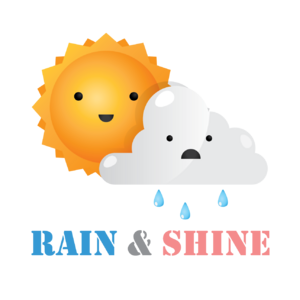Difference between revisions of "Project Groups"
| (121 intermediate revisions by 22 users not shown) | |||
| Line 41: | Line 41: | ||
|- | |- | ||
| − | |||
|| | || | ||
| − | + | <center>[[Group01_proposal|Precision Policy And Planning]] </center> | |
| + | [[File:Precision_Policy_And_Planning_logo.png|center|250px]] | ||
| + | || | ||
| + | '''Enhancing the exploration of resident distribution and social demographic across planning area with Visual Analytics''' | ||
| + | |||
| + | With Singapore’s growing population and limited resources, she has to oversee several developing social trends to enjoy consistent prosperity and harmony. These social trends encompass growing income inequality, low birth rates and equal opportunities for education across planning areas. As such, insights on educational qualification, resident distribution, and demographics are key in ensuring better awareness of these dangerous trends and will help educate and inspire both the public and policy makers to build a holistic Singapore together. | ||
| + | <br> | ||
| + | <br> | ||
| + | Given the government’s effort of making [https://www.smartnation.sg/resources/open-data socially relevant data public], we were inspired to use this data to build a visual analytics application to enhance the exploration of resident distribution and social demographic across planning area. This visual analytics platform will largely be based on Population Census data and uses several time series and map-based charts to manifest the different population trends. By using charts such as choropleth map, ternary plot, and dotted line chart, we will enable the user to interactively explore large amounts of data in a much more interpretative manner. This will help them identify key trends to get new ideas for policies and residential planning. | ||
| − | |||
|| | || | ||
* [[Group01_proposal|Proposal]] | * [[Group01_proposal|Proposal]] | ||
* [[Group01_poster|Poster]] | * [[Group01_poster|Poster]] | ||
* [[Group01_application|Application]] | * [[Group01_application|Application]] | ||
| − | * [[Group01_research_paper | + | * [[Group01_research_paper| Research Paper]] |
| − | |||
| − | |||
| − | |||
| − | |||
| − | |||
| − | |||
| − | |||
| − | |||
| − | |||
| − | |||
| − | |||
| − | |||
| − | |||
| − | |||
| − | |||
| − | |||
| − | |||
| − | |||
| − | |||
| − | |||
| − | |||
| − | |||
| − | |||
| − | |||
| − | |||
| − | |||
| − | |||
| − | |||
| − | |||
| − | |||
| − | |||
| − | |||
| − | |||
| − | |||
| − | |||
| − | |||
| − | |||
| − | |||
| − | |||
| − | |||
| − | |||
| − | |||
| − | |||
| − | |||
|| | || | ||
| − | * | + | * Ng Jun Hong |
| − | * | + | * Choy Yu Min Justin |
| − | * | + | * Jiang Xi |
|- | |- | ||
| + | || <center>[[Group02_team|Rain & Shine]]</center> | ||
| + | [[File:Rain & Shine(new).png|300px|frameless|center]] | ||
|| | || | ||
| − | + | '''Identify in-depth insights and trends of the Climate in Singapore with Interactive Visualisations''' | |
| − | |||
| − | |||
| − | |||
| − | |||
| − | |||
| − | |||
| − | |||
| − | |||
| − | |||
| + | The current reporting of Singapore's Climate has always been primitive and thus it is challenging to derive in-depth insights for viewers. In 2019, multiple news companies reported that Singapore is heating up twice as fast as the rest of the world. When combined with the island’s constant high humidity, it could be life-threatening. Professor Matthias Roth of the department of geography at the National University of Singapore (NUS) attributed the rising temperatures to global warming and the Urban Heat Island (UHI) effect. However, there was no data given to back up their claims on the changes in Singapore's weather. | ||
| + | <br> | ||
| + | <br> | ||
| + | Our team aims to present Singapore's climate data in more user-friendly and meaningful interpretation ways. Through Rain&Shine, an interactive and user-friendly visualization dashboard that shows the distribution of the climate by Subzone, Region, and Overall, we hope to provide Singaporeans with knowledge and in-depth insights to Singapore's Climate. Additionally, we want to identify the trends inherent within the weather data available and answer questions regarding the changes in Singapore's weather from available historical data. | ||
|| | || | ||
| − | * [[ | + | * [[Group02_proposal_v2|Proposal]] |
| − | * [[ | + | * [[Group02_poster|Poster]] |
| − | * [[ | + | * [[Group02_application|Application]] |
| − | * [[ | + | * [[Group02_research_paper| Research Paper]] |
|| | || | ||
| − | * | + | * Chua Ming Yu |
| − | * | + | * Guo Lingxing |
| − | * | + | * Tanny Lai |
|- | |- | ||
| + | ||<center>[[Group03_proposal|DevBuzz]] </center> | ||
| + | [[File:devbuzz.jpg|center|300px]] | ||
|| | || | ||
| − | + | '''Visualizations of Stack Overflow Developers' Survey''' | |
| − | |||
| − | + | Stack Overflow is arguably the biggest online community for developers all around the world. Each year, Stack Overflow field a survey with questions ranging from developers’ favorite technologies to their job preferences. This is done to allow Stack Overflow to better understand its active users. For 2019, nearly 90,000 developers participated in this 20-minute survey. Although the official Stack Overflow website provides a series of visualizations for all the results of their survey questions, we found that there is a lack of comprehensive and interactive visualizations. After much deliberation, our team has narrowed down to three main aspects that we think are the most interesting and useful to the general users: Technology, Salary, and Job. | |
| − | + | <br> | |
| − | <br | + | <br> |
| − | < | + | Our team aims to build user-friendly dashboards that highlight the most interesting aspects of the active developers in Stack Overflow. This will allow any interested users to get a quick overview of the essential results of this annual survey without the need to tediously scroll through a long list of static visualizations. Additionally, through various useful interactive filters, users can customize their explorations and gain more meaningful insights that suit their needs. |
| + | <br> | ||
| + | <br> | ||
| + | In order to help us expedite the building of these interactive visualizations, our team has decided to use R which gives us access to a wide variety of libraries and tools for data preprocessing and building user-friendly dashboards. | ||
|| | || | ||
| − | + | * [[Group03_proposal|Proposal]] | |
| − | + | * [[Group_3_Poster|Poster]] | |
| − | + | * [[Group_3_Application|Application]] | |
| − | + | * [[Group_3_Research_Paper| Research Paper]] | |
| − | |||
| − | |||
| − | |||
| − | |||
| − | * [[ | ||
| − | * [[ | ||
| − | * [[ | ||
| − | * [[ | ||
|| | || | ||
| − | * | + | * Ang Wei Xuan Dion |
| − | * | + | * David Chow Jing Shan |
| − | * | + | * Peh Anqi |
|- | |- | ||
| + | ||<center>[[Group04_proposal|Anti-Suicide Squad]]</center> | ||
| + | [[File:AntiSuicideSquad.jpg|center|300px]] | ||
|| | || | ||
| − | + | '''Visualize the underlying patterns behind suicide''' | |
| − | |||
| − | |||
| − | |||
| − | |||
| − | |||
| − | ''' | ||
| − | |||
| − | |||
| − | |||
| − | |||
| − | |||
| − | |||
| − | |||
| − | |||
| − | |||
| − | |||
| − | |||
| − | |||
| − | |||
| − | |||
| − | |||
| − | |||
| − | |||
| − | |||
| − | + | Close to 800 000 people die due to suicide every year, which comes up to one every 40 seconds according to the World Health Organisation (WHO). Suicide is a global phenomenon, present in many countries and is pervasive to people from all walks of life. In the last 45 years, suicide rates have increased by 60% worldwide and is now the second leading cause of death among young people after road injury. | |
| − | |||
| − | |||
| − | |||
| − | |||
| − | |||
| − | |||
| − | |||
| − | |||
| − | |||
| + | Every life is precious. The numbers in the dataset was once a person who took their own lives, and had a ripple effect affecting their loved ones, family and friends. Our group would like to analyse factors such as gender, age, generation and GDP per capita to better understand the demographic of those who are likely to commit suicides, so that organisations such as Samaritans of Singapore or even schools and companies can identify those that are of higher risk and take measures to mitigate the likelihood of suicides for those people. | ||
|| | || | ||
| − | * [[ | + | * [[Group04_proposal|Proposal]] |
| − | * [[ | + | * [[Group04_poster|Poster]] |
| − | * [[ | + | * [[Group04_application|Application]] |
| − | * [[ | + | * [[Group04_research_paper| Research Paper]] |
|| | || | ||
| − | * | + | * Sherry Tao Shi Hua |
| − | * | + | * Tian Mingze |
| − | |||
|- | |- | ||
| − | |||
| − | |||
| − | |||
| − | |||
| − | |||
| − | |||
| − | |||
| − | |||
| − | + | ||<center>[[Group05_proposal|No Game No Life]]</center> | |
| − | + | [[File:Nogamenolife.png|center|300px]] | |
| − | |||
| − | |||
| − | |||
| − | |||
| − | |||
| − | || | ||
| − | |||
| − | |||
| − | |||
| − | |||
| − | |||
| − | |||
| − | <center | ||
| − | < | ||
| − | [[File: | ||
| − | |||
| − | |||
|| | || | ||
| − | ''' | + | '''Visualizing the trends and pattern of video game sales''' |
| − | |||
| − | |||
| − | |||
| − | |||
| − | |||
| − | |||
| + | The video game industry has grown massively over the years, with $2.3 billion in sales in the US alone in 2019. However, the industry has also shown signs of stagnation, with a 19% decline in sales from the previous year. With an increasingly saturated market and disruption caused by mobile and VR games, we aim to create an interactive platform to understand the trends of the industry and come up with insights to aid future and existing developers. | ||
|| | || | ||
| − | * [[ | + | * [[Group05_proposal|Proposal]] |
| − | * [[ | + | * [[Group05_poster|Poster]] |
| − | * [[ | + | * [[Group05_application|Application]] |
| − | * [[ | + | * [[Group05_research_paper| Research Paper]] |
|| | || | ||
| − | * | + | * Darren Sim |
| − | * | + | * Neo Tee Yong |
| − | * | + | * Alyssa Rinelli |
|- | |- | ||
| − | |||
|| | || | ||
| − | <center | + | <center>[[Group06 proposal|Growth Signal]] </center> |
| − | [[File: | + | [[File:Growth Signal Logo.jpg|center|300px]] |
| − | |||
| − | |||
|| | || | ||
| − | ''' | + | '''Visualizing Singapore's Higher Education Landscape''' |
| − | + | Singapore’s education system has always been regarded as one of the most successful in the word and Education have been a key area of focus of development by the government to produce new talents and act as a source of revenue by attracting international students. Information such as the Graduate Employment Survey, Enrolment of students, government expenditure and the Global Competitiveness Index (GCI) rankings report on Singapore's education system are located either on various institutions’ website, government generated reports or on data sites. Hence, the general reader is unable to get the full information on higher learning institutions in Singapore. | |
| + | <br> | ||
| + | <br> | ||
| + | How successful is Singapore’s graduates in securing employment and high income? What are the most popular and successful courses across different demographic and how has they changed over the years? | ||
| + | <br> | ||
| + | <br> | ||
| + | As such, our team planned to build a dashboard to act as a centralised platform to portray Singapore’s Higher Education Landscape, particularly those of Polytechnics and Universities in terms of its performance, enrolment, government spending and graduates’ prospects to help students gain insights to better plan their education path. | ||
|| | || | ||
| − | * [[ | + | * [[Group06_proposal|Proposal]] |
| − | * [[ | + | * [[Group06_poster|Poster]] |
| − | * [[ | + | * [[Group06_application|Application]] |
| − | * [[ | + | * [[Group06_research_paper| Research Paper]] |
|| | || | ||
| − | * | + | * Daniel Soh |
| − | * | + | * Lim Si Ling |
| − | * | + | * Kang Hui Yun |
|- | |- | ||
| − | |||
|| | || | ||
| − | <center | + | <center>[[Group07 proposal|WE ARE TEAM HIVA]] </center> |
| − | < | + | [[File:team_mers_logo.png|center|250px]] |
| − | [[File: | ||
| − | |||
| − | |||
|| | || | ||
| − | ''' | + | '''Visualization and insights of HIV in the United States''' |
| − | + | ||
| − | + | HIV/AIDS, a chronic manageable disease, is a global pandemic that has created unprecedented challenges for physicians and health infrastructures. There is no cure for HIV yet. However, treatment can control HIV and enable people to live a long healthy life.<br> | |
| − | <br><br> | + | <br> |
| − | + | Our project aims to provide visualizations for the public to better understand the extent of the problem. We also aim to show the importance of treatment by analysing links between seeking treatment and death rate. | |
| − | |||
|| | || | ||
| − | * [[ | + | * [[Group07_proposal|Proposal]] |
| − | * [[ | + | * [[Group07_poster|Poster]] |
| − | * [[ | + | * [[Group07_application|Application]] |
| − | * [[ | + | * [[Group07_research_paper| Research Paper]] |
|| | || | ||
| − | * | + | * Nicholas Tan Jun Hao |
| − | * | + | * Ong Li Ting |
| − | * | + | * Yip Jian Ming |
|- | |- | ||
| − | + | || <center> [[Group08 proposal|Wolf of HDB Street]] </center> | |
| − | || | + | <br> [[File:WOHS.png|300px|frameless|center]] <br> |
| − | <center | ||
| − | <br | ||
| − | [[File: | ||
| − | <br | ||
| − | |||
|| | || | ||
| − | ''' | + | '''Visualization: Singapore HDB Resale Flat Trend Analysis using Price and Volume ''' |
| − | |||
| − | |||
| + | As a buyer looking for Resale HDB flats, it can be difficult to make a purchase decision due to the lack of information in the market. Information such as increasing or decreasing price trends over the years for each estate (e.g. Tampines) or submarket (e.g. 4-ROOM flats) could be essential in the decision making process. Current tools available in the market are insufficient to supplement this decision making process as they can be unnecessarily detailed resulting in the inability to conduct a high level analysis (e.g. Price trends for each submarket and/or estate). <br> | ||
| + | <br> | ||
| + | Our project aims to provide a one-stop visualization tool that allows Resale flat buyers the flexibility to switch between high level and funneled down views so as to make better purchase decisions. The high level views include box plots showing price distributions across flat types which can then be funneled down into a histogram showing the volume distribution by size of flat filtered by flat type. The high level views also include line charts showing resale price and volume transacted trends across the years for each selected estate. The view of the line chart could be changed to focus on the trends by quarter of the year instead. We also have a dashboard which uses a tree map to display the resale price and transacted volume patterns for the range of storeys a flat is situated in (e.g. Are lower storeys in a building transacted more than the higher storeys?) | ||
|| | || | ||
| − | * [[ | + | * [[Group08_proposal|Proposal]] |
| − | * [[ | + | * [[Group08_poster|Poster]] |
| − | * [[ | + | * [[Group08_application|Application]] |
| − | * [[ | + | * [[Group08_research_paper| Research Paper]] |
|| | || | ||
| − | * | + | * Aaron Sim Huei Min |
| − | * | + | * Arino Ang Jia Ler |
| − | * | + | * Shivika Khemka |
|- | |- | ||
| − | + | || <center> [[Group09 proposal|Purple Haze]] </center> | |
| + | [[File:Purple haze.jpg|300px|frameless|center]] | ||
|| | || | ||
| − | + | '''GDP per Capita vs Air Quality: Does Economic Development Necessitate Pollution?''' | |
| − | <br | + | <br> |
| − | + | We aim to show the relationship between GDP per Capita and air quality through our application. Does a higher GDP per Capita mean more pollution? Does an increase in GDP per Capita come with more air pollution? We aim to show this data across countries using visualisations like maps and scatterplots in our application, along with time series data showing the extensive history of air quality and economic data across the world. | |
| − | |||
| − | |||
|| | || | ||
| − | + | * [[Group09_proposal|Proposal]] | |
| − | + | * [[Group09_poster|Poster]] | |
| − | + | * [https://jodianlord.shinyapps.io/aqi_app/ Application] | |
| − | + | * [[Group09_user_guide|User Guide]] | |
| − | + | * [[Group09_research_paper| Research Paper]] | |
| − | |||
|| | || | ||
| − | * | + | * Jordy Nelson Samuel |
| − | * | + | * Parbat Shreyas |
| − | * | + | * Gabriel Chuan Zhan Hong |
| − | |||
| − | |||
| − | |||
| − | |||
| − | |||
|- | |- | ||
| − | + | ||<center>[[Group10_proposal|Impex]]<center> | |
| − | || | + | [[File:Impex Logo.jpg|200px|center]] |
| − | <center | ||
| − | < | ||
| − | [[File: | ||
| − | |||
| − | |||
| − | |||
| − | |||
| − | |||
| − | |||
| − | |||
| − | |||
|| | || | ||
| − | + | '''Visualizing the Imports and Exports of Singapore's Foreign Trading''' | |
| − | |||
| − | |||
| − | |||
| − | |||
| − | |||
| − | |||
| − | |||
| − | |||
| − | + | Singapore has long been the key transport hub in the ASEAN region. However, global developments such as the trade war between the US and China, and events closer to home such as Thailand building the Kra canal may shift the balance out of Singapore’s favour. | |
| − | |||
| − | |||
| − | |||
| − | |||
| − | |||
| − | |||
| − | |||
| − | + | It is key to correctly strategise in such uncertain times. We aim to be able to create new insight and actionable strategy as to how Singapore can maintain its position as a key transport hub. | |
|| | || | ||
| − | * [[ | + | * [[Group10_proposal|Proposal]] |
| − | * [[ | + | * [[Impex_ProjectPoster|Poster]] |
| − | * [[ | + | * [[Impex_ProjectApplication|Application]] |
| − | * [[ | + | * [[Impex_ResearchPaper| Research Paper]] |
|| | || | ||
| − | * | + | * Cerulean |
| − | * | + | * Melanie Tan |
| − | * | + | * Ryan Wong |
|- | |- | ||
| − | |||
|| | || | ||
| − | <center | + | <center>[[Group11_proposal|WeHouse]] </center> |
| − | < | + | [[File:WeHouse Logo.png|200px|frameless|center]] |
| − | [[File: | ||
| − | |||
| − | |||
|| | || | ||
| − | ''' | + | '''(DR.HDB) - Dissecting the Resale HDB''' |
| − | |||
| − | |||
| + | In the past, Singaporeans would turn to the primary source giver of Resale housing information known as The Housing Development Board (HDB) to understand the changes surrounding real estate. With the advent of Singstat and other public domain data sources, there are various online visualisations that Singaporeans seek guidance from, to understand the Housing situation in Singapore. | ||
| + | </br> | ||
| + | </br> | ||
| + | To meet analytical needs of HDB buyers or sellers, our team has contributed the DR.HDB tool which identifies numerous dashboards that provide an overview of resale markets in Singapore At times, such displays can be confusing for users to understand. In this project, we would like to demonstrate the potential of DR.HDB by breaking down resale and unit prices to allow users to understand the costs across various granularity from planning regions, towns to floor level. Through the use of treemaps, time-series charts and correlation boxplots dynamically linked to interactive maps, the user would have an interactive overview of the general resale price level and volume across the years. | ||
|| | || | ||
| − | * [[ | + | * [[Group11_proposal|Proposal]] |
| − | * [[ | + | * [[Group11_poster|Poster]] |
| − | * [[ | + | * [[Group11_application|Application]] |
| − | * [[ | + | * [[Group11_research_paper| Research Paper]] |
|| | || | ||
| − | * | + | * Koh Teck Yun |
| − | * | + | * Lu ZhiMao |
| − | * | + | * Rachel Lim Pao Ling |
|- | |- | ||
| − | |||
|} | |} | ||
Latest revision as of 01:23, 13 April 2020
|
|
|
|
|
|
Project Groups
Please change Your Team name to your project topic and change student name to your own name
| Project Team | Project Title/Description | Project Artifacts | Project Member |
|---|---|---|---|
|
|
Enhancing the exploration of resident distribution and social demographic across planning area with Visual Analytics With Singapore’s growing population and limited resources, she has to oversee several developing social trends to enjoy consistent prosperity and harmony. These social trends encompass growing income inequality, low birth rates and equal opportunities for education across planning areas. As such, insights on educational qualification, resident distribution, and demographics are key in ensuring better awareness of these dangerous trends and will help educate and inspire both the public and policy makers to build a holistic Singapore together.
|
| |
|
Identify in-depth insights and trends of the Climate in Singapore with Interactive Visualisations The current reporting of Singapore's Climate has always been primitive and thus it is challenging to derive in-depth insights for viewers. In 2019, multiple news companies reported that Singapore is heating up twice as fast as the rest of the world. When combined with the island’s constant high humidity, it could be life-threatening. Professor Matthias Roth of the department of geography at the National University of Singapore (NUS) attributed the rising temperatures to global warming and the Urban Heat Island (UHI) effect. However, there was no data given to back up their claims on the changes in Singapore's weather.
|
| ||
|
Visualizations of Stack Overflow Developers' Survey Stack Overflow is arguably the biggest online community for developers all around the world. Each year, Stack Overflow field a survey with questions ranging from developers’ favorite technologies to their job preferences. This is done to allow Stack Overflow to better understand its active users. For 2019, nearly 90,000 developers participated in this 20-minute survey. Although the official Stack Overflow website provides a series of visualizations for all the results of their survey questions, we found that there is a lack of comprehensive and interactive visualizations. After much deliberation, our team has narrowed down to three main aspects that we think are the most interesting and useful to the general users: Technology, Salary, and Job.
|
| ||
|
Visualize the underlying patterns behind suicide Close to 800 000 people die due to suicide every year, which comes up to one every 40 seconds according to the World Health Organisation (WHO). Suicide is a global phenomenon, present in many countries and is pervasive to people from all walks of life. In the last 45 years, suicide rates have increased by 60% worldwide and is now the second leading cause of death among young people after road injury.
|
| ||
|
Visualizing the trends and pattern of video game sales The video game industry has grown massively over the years, with $2.3 billion in sales in the US alone in 2019. However, the industry has also shown signs of stagnation, with a 19% decline in sales from the previous year. With an increasingly saturated market and disruption caused by mobile and VR games, we aim to create an interactive platform to understand the trends of the industry and come up with insights to aid future and existing developers. |
| ||
|
|
Visualizing Singapore's Higher Education Landscape Singapore’s education system has always been regarded as one of the most successful in the word and Education have been a key area of focus of development by the government to produce new talents and act as a source of revenue by attracting international students. Information such as the Graduate Employment Survey, Enrolment of students, government expenditure and the Global Competitiveness Index (GCI) rankings report on Singapore's education system are located either on various institutions’ website, government generated reports or on data sites. Hence, the general reader is unable to get the full information on higher learning institutions in Singapore.
|
| |
|
|
Visualization and insights of HIV in the United States HIV/AIDS, a chronic manageable disease, is a global pandemic that has created unprecedented challenges for physicians and health infrastructures. There is no cure for HIV yet. However, treatment can control HIV and enable people to live a long healthy life. |
| |
|
Visualization: Singapore HDB Resale Flat Trend Analysis using Price and Volume As a buyer looking for Resale HDB flats, it can be difficult to make a purchase decision due to the lack of information in the market. Information such as increasing or decreasing price trends over the years for each estate (e.g. Tampines) or submarket (e.g. 4-ROOM flats) could be essential in the decision making process. Current tools available in the market are insufficient to supplement this decision making process as they can be unnecessarily detailed resulting in the inability to conduct a high level analysis (e.g. Price trends for each submarket and/or estate). |
| ||
|
GDP per Capita vs Air Quality: Does Economic Development Necessitate Pollution?
|
| ||
|
Visualizing the Imports and Exports of Singapore's Foreign Trading Singapore has long been the key transport hub in the ASEAN region. However, global developments such as the trade war between the US and China, and events closer to home such as Thailand building the Kra canal may shift the balance out of Singapore’s favour. It is key to correctly strategise in such uncertain times. We aim to be able to create new insight and actionable strategy as to how Singapore can maintain its position as a key transport hub. |
| ||
|
|
(DR.HDB) - Dissecting the Resale HDB In the past, Singaporeans would turn to the primary source giver of Resale housing information known as The Housing Development Board (HDB) to understand the changes surrounding real estate. With the advent of Singstat and other public domain data sources, there are various online visualisations that Singaporeans seek guidance from, to understand the Housing situation in Singapore.
|
|











